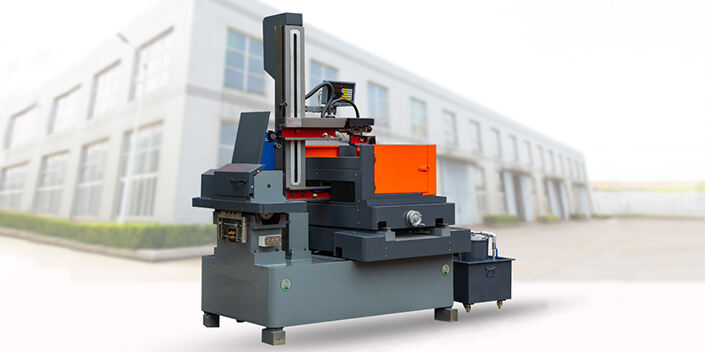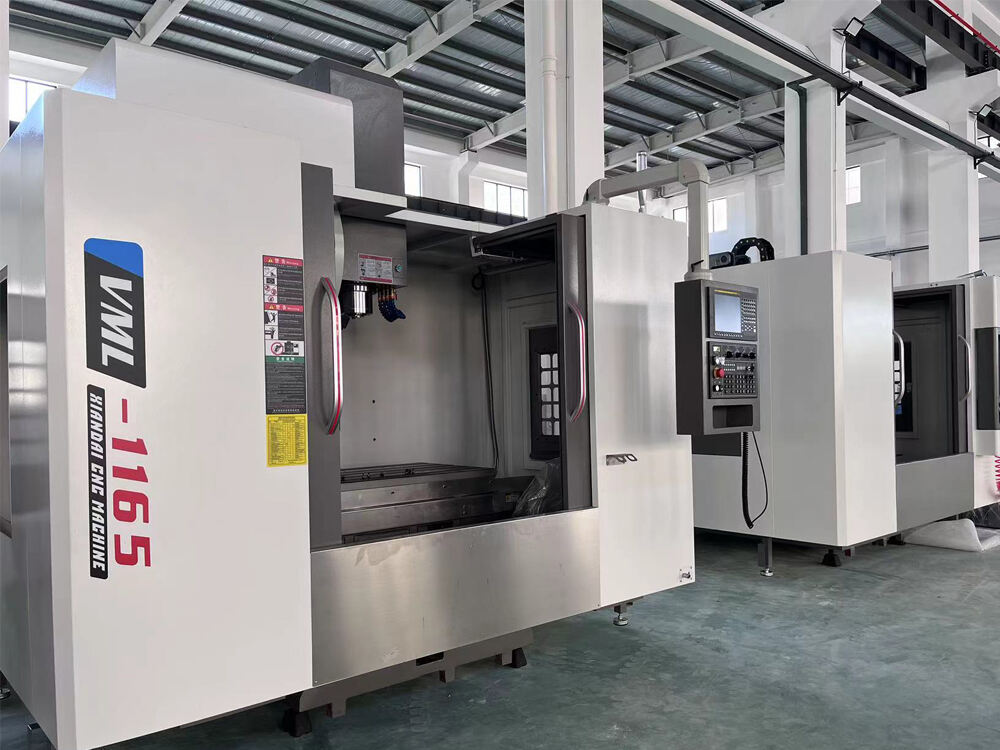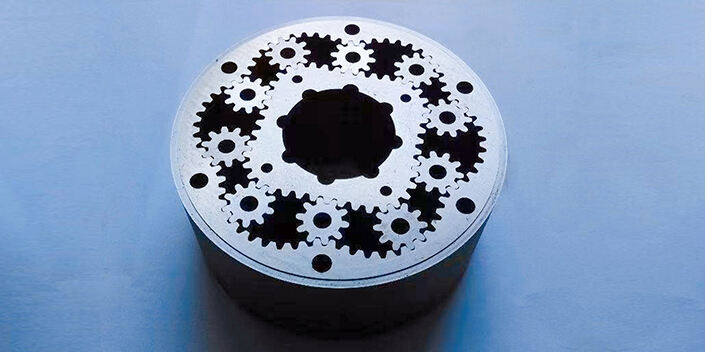What is EDM Wire Cutting?
Defining Wire Discharge Machining
Wire discharge machining, often called wire EDM for short, works differently than traditional cutting methods. Instead of physical tools, it uses a thin wire charged with electricity to slice through conductive materials very precisely. What makes this method special is how it operates. The wire functions like an electrode, creating tiny sparks within a special liquid medium known as dielectric fluid. When these sparks hit the workpiece, they melt or vaporize small sections of material. The best part? There's no actual touching between the tool and what's being cut, which means less wear and tear on equipment over time. This contact-free approach has made wire EDM particularly popular in industries where maintaining tight tolerances matters most.
What makes wire EDM stand out is how it handles those really complicated, detailed designs without sacrificing tight tolerances something absolutely critical for sectors like aerospace manufacturing, car part production, and medical device fabrication where getting measurements right matters a lot. With wire EDM, manufacturers can achieve incredible levels of detail and dimensional accuracy even when dealing with tough materials that regular machining struggles with, think carbide alloys or titanium parts. The secret sauce here? It works through spark erosion rather than direct contact between tools and material. This means components come out with all sorts of intricate shapes possible while putting far less strain on them during processing compared to conventional cutting techniques.
The Evolution of EDM Spark Erosion Technology
EDM tech first came onto the scene back in the 50s, starting off as basic spark erosion techniques. Early versions needed lots of hands-on attention from technicians and really couldn't do much beyond simple shapes. Things changed dramatically when CNC technology entered the picture though. Wire EDM machines got a complete overhaul with automation taking center stage. Precision levels shot up while parts became consistently reproducible across batches. What this meant for shop floor workers was they could set up intricate cutting patterns through programming interfaces instead of manually guiding every cut. Automated systems handled most of the work after that, cutting down on mistakes made by tired eyes or shaky hands during long shifts.
The latest improvements in EDM spark erosion tech have really taken what these machines can do to another level. Software upgrades now let operators calibrate machines with much greater detail, which means cuts are both quicker and dead accurate. What's interesting is how manufacturers are using better quality materials too. Those super thin but tough wires we see today cut through metal at impressive speeds without sacrificing quality. All these changes mean modern wire EDM machines offer remarkable precision alongside improved efficiency. They've become essential equipment in factories everywhere where getting things right on the first try matters most.
How EDM Wire Cutting Machines Work
The Wire Discharge Machining Process Step-by-Step
Wire discharge machining, or EDM for short, starts when a thin brass or copper wire gets installed as the main electrode. The machine keeps feeding this wire as it works. Meanwhile, the piece being worked on sits underwater in something called dielectric fluid. This fluid does two important things at once it cools down the area where cutting happens and washes away all those tiny bits of metal that get knocked loose during the process. When the wire gets close enough to the workpiece, sparks start flying between them. These little electrical bursts cause mini-explosions that slowly eat away at the material exactly where we want them to. Because of how precisely controlled this whole thing is, manufacturers love using wire EDM when they need to make really complicated shapes that just aren't possible with other methods. That's why so many precision industries rely on this technique for their most intricate parts.
Role of CNC in Precision Control
Computer Numerical Control (CNC) plays a vital role when it comes to managing precision during wire EDM operations. With CNC, operators can set up exact machining routes that make cuts much more accurate than traditional methods. These systems let machinists tweak settings on the fly if there are issues with wire tension fluctuations or unexpected changes in the shape of what's being worked on. That means consistent results even when things get tricky. Beyond just better accuracy, CNC tech boosts shop floor productivity while streamlining workflows across workshops. Shops report lower scrap rates too since mistakes happen less often. For companies working in fields where tiny tolerances matter most – think aerospace components or intricate medical devices – having reliable CNC integration makes all the difference between acceptable parts and costly rework.
Importance of Dielectric Fluids
Dielectric fluids play a key role in EDM operations. These special liquids act as both the pathway for electrical sparks and keep things cool at the cutting spot. Most often they're either oil based or water based mixtures. When machining parts, these fluids do several jobs at once: sweep away metal chips, stop unwanted sparking, and leave behind nice clean surfaces. Getting the right type of dielectric matters a lot because it directly affects how well the EDM works. Shops that take time to pick suitable fluids usually see better results on those tight tolerance cuts plus their machines run smoother overall. Some manufacturers even report cutting times reduced by up to 30% when using premium grade fluids.
Key Benefits of EDM Wire Cutting Technology
High-Precision Cutting Capabilities
EDM wire cutting really stands out when it comes to high precision work, sometimes getting down to tolerances around plus or minus 0.001 inches. For engineers working on parts that need exact dimensions, this kind of accuracy just can't be beat. What makes EDM so special compared to regular cutting techniques? Well, it handles those tricky internal corners and complicated shapes without breaking a sweat. Take aerospace components or medical devices for instance, these require such fine details that other methods simply wouldn't cut it. Because EDM cuts so precisely from the start, there's no need for all those extra finishing steps that typically eat up both time and money across various manufacturing sectors.
Handling Complex Geometries and Hard Materials
Wire EDM has become really good at cutting those complicated shapes and tough materials that regular machines just can't handle. Think about titanium or hardened steel parts that would normally give most tools a headache. With EDM, we get much better control over the details so nothing gets messed up during production. That's why this technique is so important for industries like aerospace engineering and making medical devices where getting the measurements right matters a lot. Manufacturers rely on wire EDM when they need components that will perform under extreme conditions without failing. The precision it offers simply isn't possible with traditional methods anymore.
Minimal Heat Impact on Workpieces
One big plus of wire EDM technology lies in how little heat it actually transfers to the workpiece being machined. Traditional cutting techniques often cause problems like warping or material breakdown because they generate so much thermal stress. Wire EDM avoids these issues thanks to the special dielectric fluid that flows through the system during operation. This fluid acts as both a coolant and insulator, keeping temperatures stable while the cut happens. For manufacturers working with delicate alloys or precision components, this matters a lot. Materials stay dimensionally accurate without losing their inherent strength characteristics, something that becomes absolutely essential when machining parts for aerospace applications or medical devices where tolerances need to be razor sharp from start to finish.
Material Efficiency and Waste Reduction
Wire EDM stands out when it comes to saving materials and cutting down on waste. Instead of traditional cutting tools, this method uses a thin wire that actually cuts through materials with very little scraps left behind after machining. For manufacturers, this means real money saved because they don't have to deal with so much leftover stock sitting around. What makes EDM even better is how precise it gets the job done right from the start. Most shops find they spend way less time doing extra finishing work compared to other methods. The combination of lower costs and reduced environmental impact has made EDM a smart choice across many manufacturing sectors. Companies are seeing tangible benefits without having to compromise on quality or production speed.
Industrial Applications of EDM Wire Cutting
Aerospace Component Fabrication
EDM wire cutting plays a really important role in making aerospace components because it can achieve extremely precise results. Manufacturers rely on this technique when creating complex parts like turbine blades and various engine components, since even small errors in these parts can affect how well the whole system works. What makes Wire EDM stand out is its capability to work with tough materials called superalloys while still keeping tight tolerances, which means the finished products actually match what engineers need them to be. Plus, EDM technology offers good repeatability so companies get consistently high quality parts batch after batch. This consistency matters a lot in aircraft manufacturing where safety standards are incredibly strict and cannot tolerate any variation between units.
Medical Device Manufacturing
Wire EDM plays a vital role in making medical devices where exact measurements matter most, like in surgical tools and implantable parts. What makes this technology stand out is how it creates super clean cuts without leaving behind debris or rough edges, which lowers contamination risks significantly during production. Sterility matters a lot in operating rooms and other clinical settings after all. The precision level achieved through wire EDM matches what regulatory bodies demand across the medical field. Manufacturers know their products must pass rigorous inspections before reaching patients, so they rely on processes that consistently deliver high quality results from start to finish.
Tool and Die Production
Wire EDM plays a vital role in tool and die manufacturing, providing a way to create complicated tooling and dies with remarkable accuracy. With this method, manufacturers can form really intricate shapes needed for things like stamping dies and mold components that just aren't possible with traditional machining methods. The level of precision achieved through wire EDM actually makes these manufacturing processes run smoother while also making the finished tools last much longer since there's less wear on them during operation. Longer lasting tools mean fewer replacements overall, something that matters a lot in factories running at full capacity all day long. When tools don't need replacing every few months, it saves both money and downtime that would otherwise eat into production schedules.
Automotive Prototyping
Wire EDM plays a big role in automotive prototyping because it lets teams create and test complicated car parts much faster than traditional methods. Designers can tweak their ideas quickly and see how these new components actually perform under real conditions. The fast production times from wire EDM really boost innovation in the auto industry since prototypes get made and tested in record time. What's especially useful about this technology is that it works well with different kinds of metals and alloys. This means manufacturers can experiment with all sorts of materials when developing new vehicle components, something that becomes increasingly important as cars become more technologically advanced over time.





